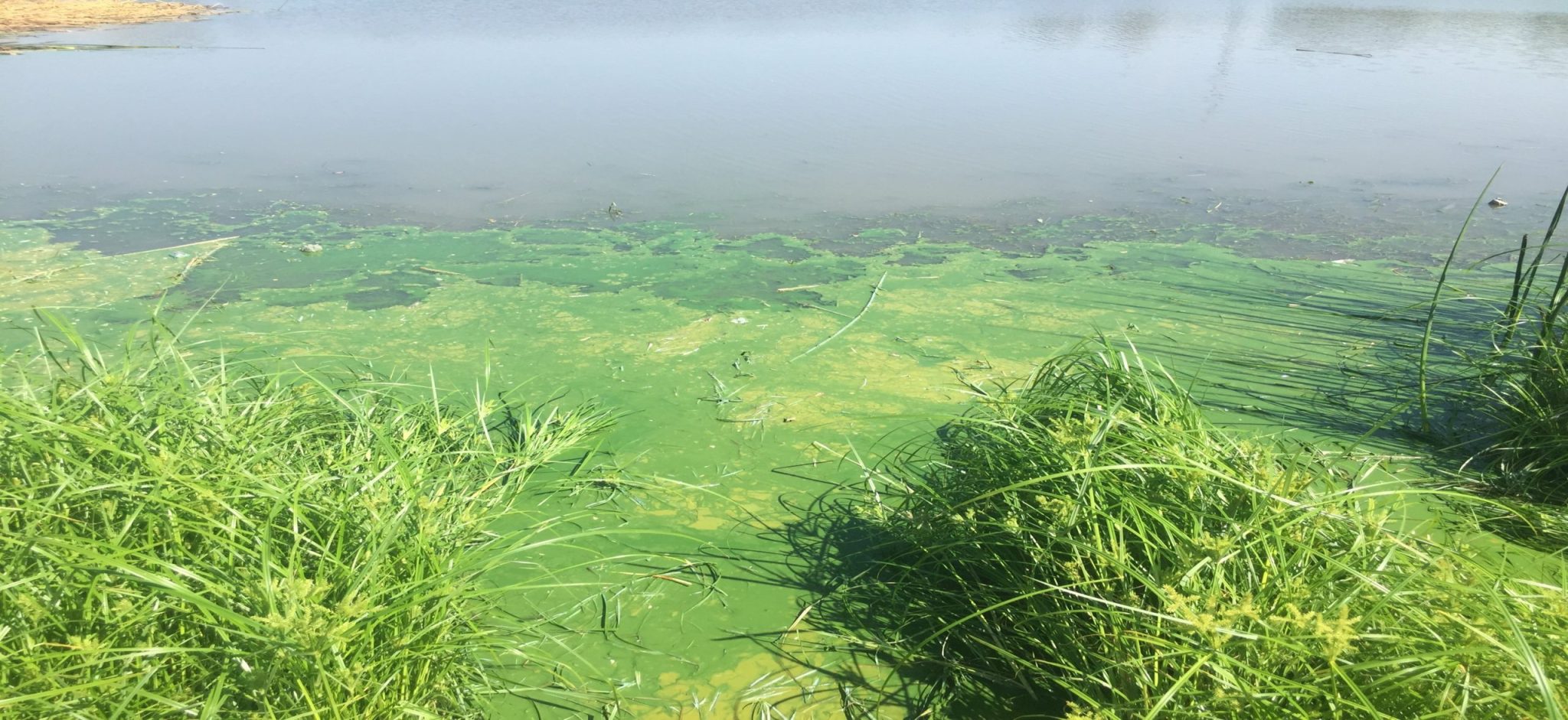Blue-Green Algae (Cyanophyta) Scientific names: Anabaena, Aphanizomenon, and Microcystis, etc.
Blue-Green Algae (Cyanophyta) Physical characteristics
- can be unicellular, filamentous (thin and stringy or hair-like), or colonial
- buoyant and will form “scum” layer or floating mats on water surface
- can cause blue, green, brown, or reddish-purple coloration of water
Where does Blue-Green Algae (Cyanophyta) grow?
Blue-green algae can grow in both marine and freshwater. Most of the harmful algae blooms (HABs) occur in freshwater. Blue-green algae can grow in lakes, ponds, reservoirs, and slow-moving streams when environmental conditions are right, such as warm water, abundance of nutrients like phosphorus or nitrogen, and plenty of sunlight.
Cons of Blue-Green Algae (Cyanophyta) (there are no Pros)
Blue-green algae produce cyanotoxins as well as taste-and-odor compounds that fowl the water they are found in. The cyanotoxins can pose a serious threat to not only fish but livestock, companion animals, and humans as well.
USDA, NRCS. 2018. The PLANTS Database (http://plants.usda.gov, 28 March 2018). National Plant Data Team, Greensboro, NC 27401-4901 USA.
Information and photos courtesy of AquaPlant A Diagnostics Tool for Pond Plants and Algae.

